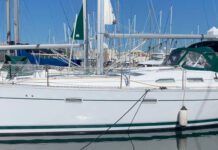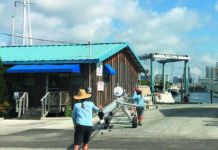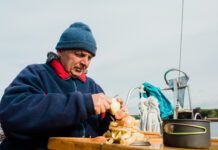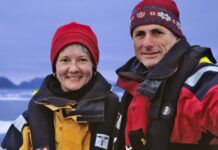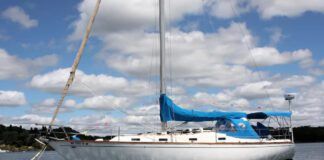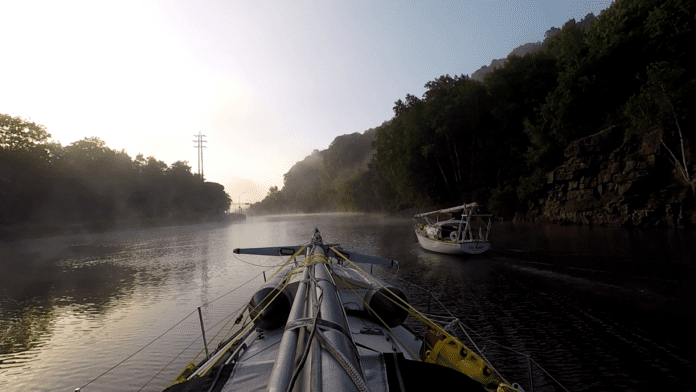
What is the greatest adventure you can have in North America?
RV enthusiasts will drive to the desert to see the Grand Canyon, visit Yellowstone and the West Coast. Airplane folks will fly into LAX, JFK, Miami and onwards to the tropics. But when boat people want a year-long trek to see most of the Eastern U.S. and a bunch of Canada on an epic adventure worth thousands of pictures, hundreds of new friends and the experience of lifetime—they do the Great Loop.
Don’t think that the Great Loop is limited to people with trawlers and power boats. Sailboats can come and play too. The northern section of the Loop on the Great Lakes is excellent sailing, as is the East Coast of the U.S. out in the Atlantic. Some of the best sailing I’ve ever done was off the coast of Georgia and the Carolinas. Yes, we have to drop our masts for the canals and locks but you’ll find facilities in place to help you do that. I’ve done it and it really isn’t that hard. Plus, an argument can be made that to do the Great Loop, you might be more comfortable in a sailboat anyway. Traversing the Great Lakes or the Gulf with sails up can be a much better experience than rolling around on a trawler. And my draft of five-foot-five never really got in the way.
NOAA describes the Great Loop as, “A continuous waterway that recreational mariners can travel that includes part of the Atlantic, Gulf Intracoastal Waterways, the Great Lakes, Canadian Heritage Canals, and the inland rivers of America’s heartland. Anyone who completes the journey is then named an official ‘Looper’.”
America’s Great Loop Cruisers Association (AGLCA) says:
“Loopers cruise the 6,000-mile Great Loop route aboard their own boats completing a circumnavigation of the eastern U.S. and part of Canada via mostly protected inland waterways. The Great Loop route follows the Atlantic Intracoastal Waterway, the Chesapeake Bay, and the New York Canals northwards, goes across the Great Lakes, south on the Inland Rivers, and then east Gulf Coast to complete the Loop.”
Both NOAA and AGLCA will be definitive places for information if you want to embark on this great adventure. And if you’re anything like me, after reading this article, you’ll want to!
There’s a helpful video on the Great Loop YouTube channel by Kim Russo, Director of AGLCA, where she walks cruisers though the process. In the video, she says one of the biggest questions AGLCA gets is how hard is it and how technical is it to complete the loop? Kim answers, “It’s not a very technically challenging trip. It’s not an ocean crossing where you’re out in the middle of the ocean without access to services. The boating skills you need, even if you have not boated before, are pretty easily obtained in most areas of the country. You can take safe boating courses and navigational courses and just about everything you need from local power squadrons or Coast Guard auxiliaries.”
ROUTE OPTIONS AND WHEN TO START
There are a couple of different routes to the loop. You can do it entirely in the U.S. if you want to, though you’ll miss some highlights if you do. If you do the whole thing, you’ll see 15 different states and two Canadian provinces, and make landfall in both Canada and the U.S. Some loopers side bar over to the Bahamas too – that’s an option for the tropical-weather seekers.
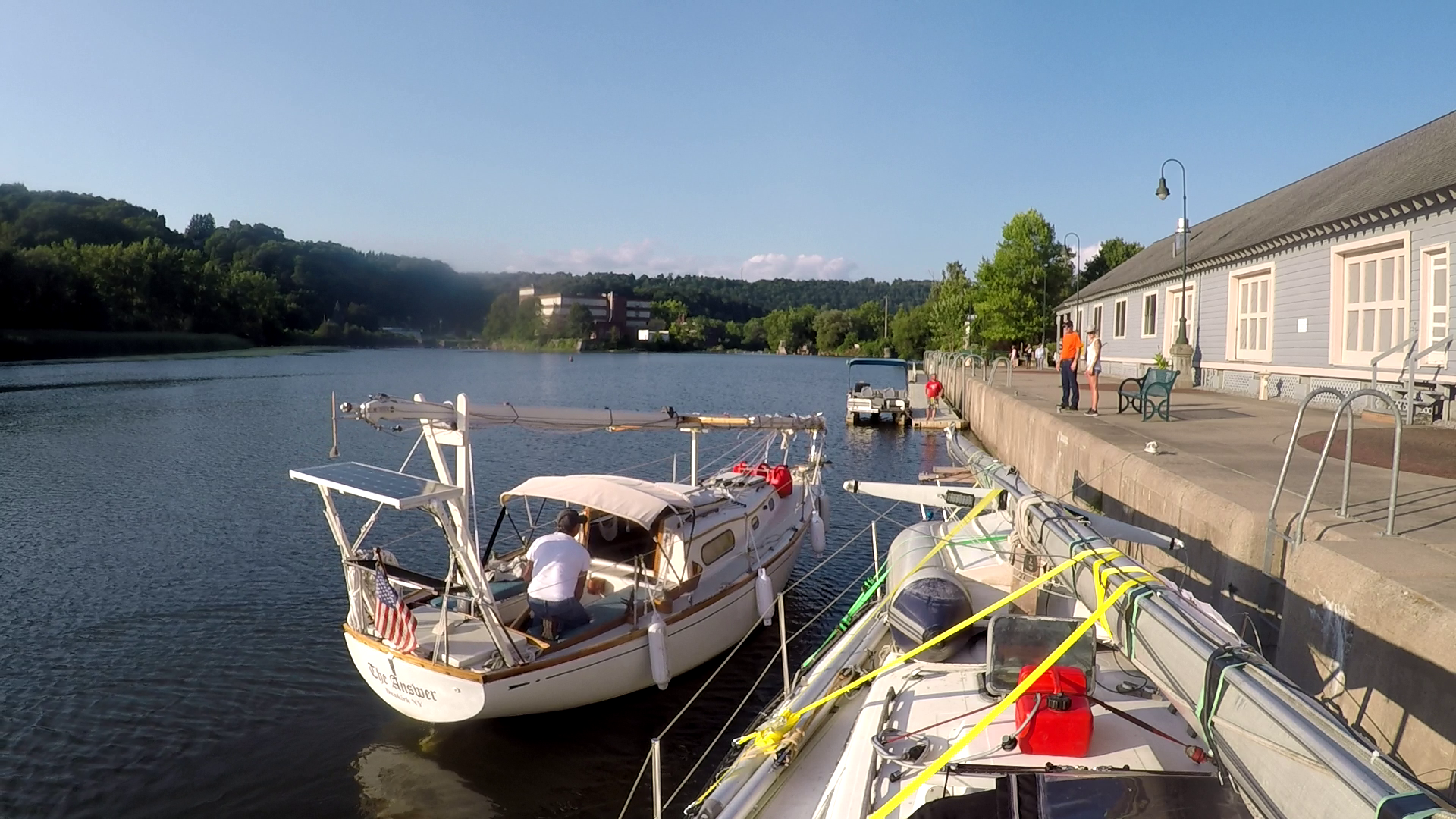
On the shortest route, you’ll cover 5,250 miles, or you can sidetrack from time to time and do 7,000 or even 10,000 miles. You’ll go through 100-plus locks and all this is usually done in a year’s time but you can go faster or slower if you’d like. Some loopers have completed the loop in as little as two and a half months, while some cruisers will spend years on the journey. Part of the beauty of this trip is that it’s entirely up to you.
There is a beaten path and a fairly set schedule if you just want to go with the flow—and I mean that literally. Timing is usually set by seasonal weather in the north, hurricane season in the south and lock schedules on the canals. You’ll want to be around the Great Lakes in the summer and toward Florida in the winter.
NOAA explains why the counter-clockwise route direction is best:
“If you start in Chicago, continue south in a counter-clockwise direction to take advantage of the river currents that run into the Mississippi River. While a few people stay on the Mississippi all the way to the Gulf of Mexico, most ‘Loopers’ choose to exit at the Tennessee River to avoid heavy barge traffic on the larger waterway. This path leads to the Tennessee-Tombigbee Waterway, which also flows to the Gulf.
Regardless of the Southern route selected, boaters can float downstream to the warm waters of the Gulf and explore the Flower Garden Banks National Marine Sanctuary. From there, cruise east on the Gulf’s Intracoastal Waterway. While soaking up some Florida sun, visit the Florida Keys National Marine Sanctuary.
Then travel north up the Intracoastal Waterway and discover the Gray’s Reef National Marine Sanctuary. Continue north on the Intracoastal to New York City. From the Big Apple, it’s a straight shot up the Hudson to the Erie Canal. Then head west across to the Great Lakes. Boaters may visit Thunder Bay National Marine Sanctuary when sailing up Lake Huron and then finally returning back to Chicago.”
Tip: Ask your insurance company about doing the Great Loop. Some insurance policies have stipulations for how far south you can go and when. Often you are required to wait until November before heading too far south in the U.S. to avoid hurricane season. For this reason, a lot of loopers end up waiting somewhere in Alabama until they’re allowed further south.
This interactive Google Map by Captain John is a helpful tool to check out the route and important information like marinas, fuel stations, vertical clearances on bridges and fried catfish restaurants.
Kim from ALGCA says:
“If you’re starting from Charleston South Carolina you would start in the springtime and head north. The loop is generally done counterclockwise so that you can take advantage of the currents in the river system. It has been done in a clockwise direction but it does take more fuel and more time to buck the currents…We are seeing more and more people doing the great loop in segments meaning that they boat for a few weeks or few months, whatever their time frame allows, then leave the boat to return home to take care of business, family needs, whatever that might be. Some people are looping just in summers, some people are looping for a few weeks, and then going home for a few months. It’s really up to you.
One of the advantages of doing it in segments is that you have plenty of time to plan the next segment when you return home. Also, you’re not locked into hitting some of these rule of thumb time markers. For example, you could spend an entire summer on the Chesapeake Bay and not see all of the nooks and crannies there, so if you’re looping in segments, you’ve got the advantage of being able to spend the whole summer in a specific area. If you’re doing the “all-at-once trip” and you need to be all the way through Canada during the summer months then you really can’t spend a lot of time on the Chesapeake Bay because you need to keep moving so you can get through the Great Lakes and through Chicago before the cold weather hits. You have lots of options – we just stress that you really need to make it your own trip and do it in a way that speaks to you.”
WHAT KIND OF BOAT DO I NEED?
Kim explains that the biggest question anyone has is: What kind of boat do I use? She says a lot of loopers start in Florida and that there’s a trend to buy the boat in Florida, do the Loop and sell the boat back in Florida again. Therefore, for us ambitious future loopers, Florida might be the easiest place to find a boat. Especially a boat that may have already done the Loop and been outfitted accordingly.
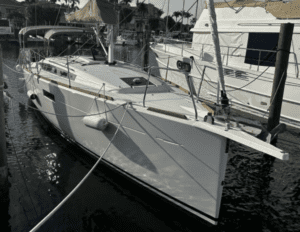


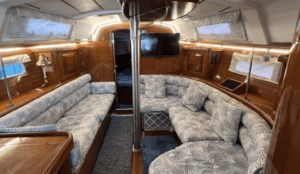
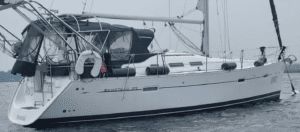
There are endless options for which boat to choose. Conventional wisdom of yesteryear was to buy the smallest boat you and your company would be comfortable on. Smaller means less fuel, easier to dock and less to go wrong. But in more recent years, people have been leaning further into comfort and amenities, though some hard restrictions do apply.
The Loop has been done in everything from a kayak to a 70-foot yacht. Many sailors are also choosing sailboats where they step and unstep the mast as needed.
STEPPING AND UNSTEPPING CONSIDERATIONS
AGLCA says:
“The lowest unavoidable fixed bridge on the Great Loop is currently charted at 19.6’ and is located at mile 300.6 on the Illinois River. The boat you intend to use for the Loop must be able to get under that bridge. Some members with taller boats are able to get under 19.6’ by lowering antennas, radar arches, etc. About 8% of our members have sailboats. Most sailboats will need to unstep the mast to clear the bridges outside of Chicago and upstate New York.
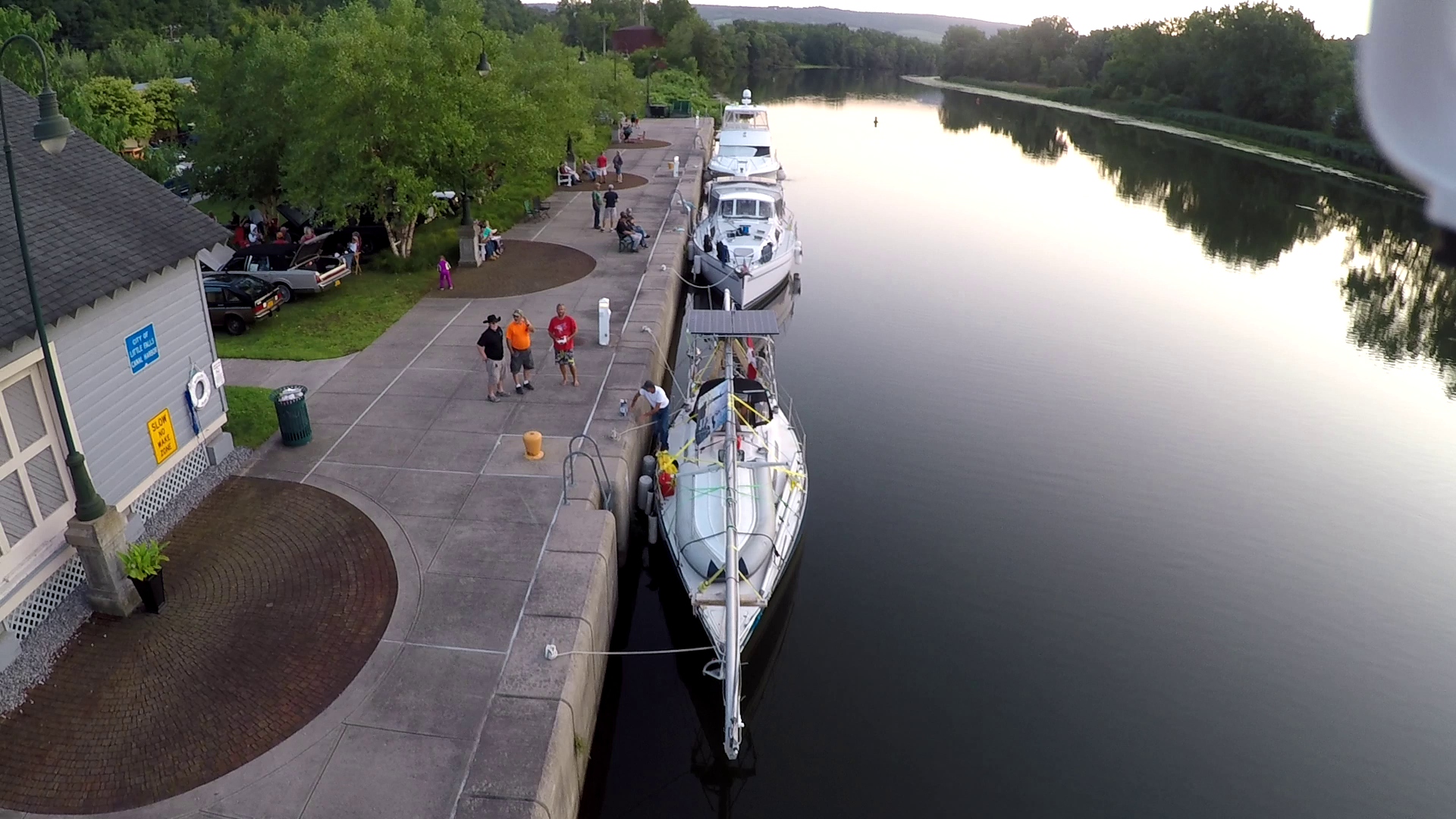
Your choice of waterways through New York State and into Canada will also be dependent on your air draft, or the height above the water line. If you can clear a 15′ bridge, you have the option to take the Erie Canal to its western terminus into Lake Erie. If you can clear a 17′ bridge, you can do the ‘triangle loop’ that takes you into Lake Champlain and through the St. Lawrence Seaway into Lake Ontario. (As an additional option on the triangle loop, if you can clear many eight-ft.bridges, you can take the historic, charming and free Lachine Canal through Montreal rather than the Seaway locks.) The final option is to take the Erie Canal to the Oswego canal to Lake Ontario. That route requires you to clear 21′ bridges.
Your air draft will also dictate which route you take off Lake Michigan. To cruise the Chicago River through downtown, you must be able to clear 17′ bridges. If you can’t clear that, you will take the Cal-Sag Canal, which is south of Chicago to the Illinois River.”
Mast stepping can be a daunting prospect but, it doesn’t have to be as we have several options to get the job done including companies that have been doing this for loopers for decades. Facilities like Hop O’Nose Marina on the Hudson (https://www.greatnortherncatskills.com/outdoors/hop-onose-marina) or Smith Boys in Buffalo (https://www.smithboys.com/erie-basin). These facilities cater to loopers and will do all the work for you. Or for the more do it yourself sailor, Castleton Boat Club (https://www.castletonboatclub.com/membership) on the Hudson will let you use their electric gin pole for $100.
What to do with the mast when it’s down it up to you. Here’s a helpful link about that process on CruisersForum. For boats under 40 feet we often see the mast lashed down to temporary wooden frame work on the deck. Make sure you have enough ratchet straps on hand and it’s securely fastened. Everyone leaves their used wooden frame work at the facility so you can usually get it for free.
For larger boats with larger masts, you have the option to truck the mast. Delivery services exist for this purpose and the facilities that steps the mast for you will often have someone they usually use for this. The mast goes on a truck and meets you at the other end.
WATER DRAFT CONSIDERATIONS
AGLCA recommends: “your boat for the Great Loop should not have a depth much greater than 5’. The Canadian Canals are maintained at a depth of 6’, but you are required to contact them and sign a waiver if you draw over 5’. You will also have trouble during low tide on some areas of the Atlantic Intracoastal Waterway if you draw more than 5’, and there may be other areas that are difficult to navigate with a draft much deeper than 5’. That said, many boats with greater than 5′ draft have successfully completed the Loop.”
BOAT LENGTH
AGLCA explains, “There is no practical length restriction for doing the Great Loop. Of course, the larger the boat, the more costly it is to tie-up at marinas that charge by the foot, and the more difficult it becomes to get in and out of some of shallower or ‘skinnier’ waters on the Great Loop. In reality, however, water draft and air draft will become a problem long before length. The Trent Severn does have a maximum length of 84 feet, but if you exceed that, there are alternate routes.”
BEAM MAXIMUM
AGLCA says that “It’s hard to imagine a pleasure-boat that is too beamy for the Great Loop. The only areas where a beam maximum comes into play are in the locks. Most of the locks in the U.S. were built for commercial traffic, so pleasure craft have no size challenges in these locks. The smallest width for a lock we know of is the Port Severn Lock on the Trent Severn Waterway at a width of 23’. If your boat’s beam exceeds that, there are alternate routes that don’t require you cruise the Trent Severn.”
FUEL CONSIDERATIONS
AGLCA explains, “The farthest distance without a fuel stop along the Great Loop route is between Hoppies in Kimmswick, Missouri on the Upper Mississippi River and Paducah, KY. This is a distance of about 200 miles. Some Loopers whose boats do not have the necessary range carry additional fuel in cans, drums, or bladders on the deck for this section of the route.”
CONCLUSION
As someone who has done about half of the Great Loop myself twice, on a sailboat, I can say with certainty that it’s worth doing. In upstate New York you get so much small-town America, the historic Erie Canal is fascinating and the locks are a lot of fun. Down the East Coast you see Manhathan, Sandy Hook, Cape May, Annapolis, Norfolk, the Carolinas, Savanah and St Augustine.
The scenery throughout the Great Loop is amazing, you’ll meet people you’ll never forget and you’ll have the experience of a lifetime. The best advice I can give you— other than take your time and enjoy the ride is— go do it. Make a plan, set a date, buy a boat and do it. You won’t regret it but you will regret not doing it.





